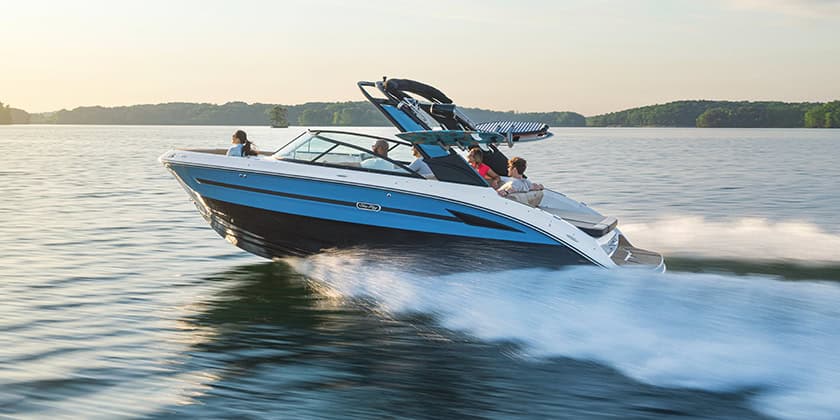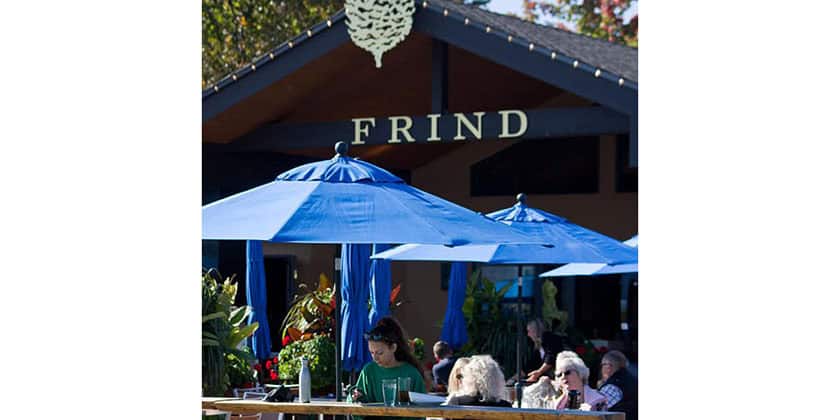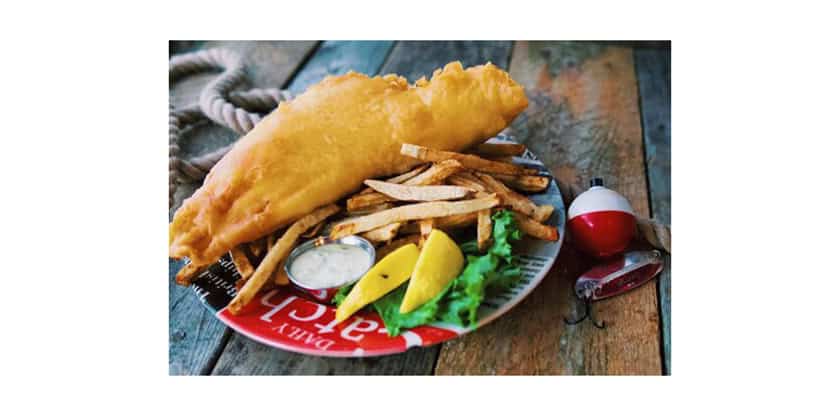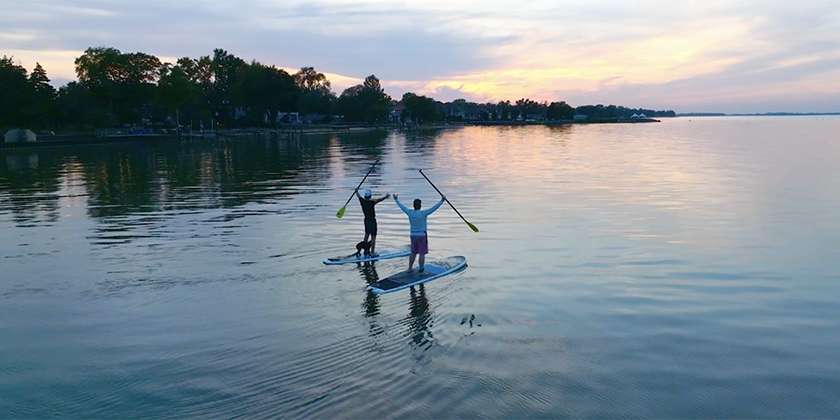Aloha 8.5
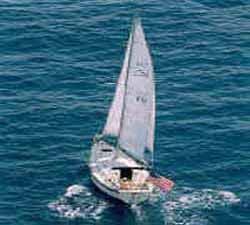 By Carol Nickle & Bryan Gooderham
By Carol Nickle & Bryan Gooderham
Key parameters such a sail area, displacement and ballast are all moderate. The beam is narrower than in some modern designs, but is carried well down toward the waterline. The wide waterline beam, combined with gently curving underbody sections and slight fullness in the bows, results in plenty of interior volume. Its underwater profile shows a fairly shallow, swept-back fin keel and a stout skeg leading into the transom-hung rudder. The shallow draft is no doubt handy for gunkholing and the skeg improves tracking ability and ease of steering.
We found it interesting to compare the Aloha 8.5 to the Aloha 8.2, designed by Robert Perry in 1979. The 8.2, just a foot shorter than the 8.5, shows the modern racer/cruiser influence with sharp bows, a full beam carried well aft and a flat underbody. By contrast, the 8.5’s classic curving lines demonstrate the more gracious approach to cruising comfort.
The overall impression of the interior of the Aloha 8.5 is very positive, with attractive woodwork, an excellent woodwork, an excellent headliner and nice upholstery. The saloon has roomy, comfortable settees to port and starboard, with two lockers separated by an open shelf above the settee backs. It is one of the nicest saloon stowage treatments we have seen; the teak-faced lockers each have a practical louvered door and the shelf has a suitable fiddle. The dinette table, mounted on the forward bulkhead, is straightforward and easy to use. When we lowered the table, a shallow cabinet for bottle stowage and the like was revealed on the bulkhead. We thought the cabinet a good idea, but it makes the table assembly a little boxy when folded back up. There is plenty of general stowage under the settees and behind the seats backs. Under each settee are two lockers with access from the top and also a drawer opening to the front.
The interior surfaces of the various lockers were rough and the fiberglass was not well finished. One would certainly want to pack away clothes or bedding unprotected. The pull-out double berth is one of the more cumbersome we have encountered, as it requires three furniture-type legs to be screwed in. Our difficulties may have been exaggerated by the fact that, on the yacht we tested, the bunk extension didn’t quite fit properly. Once set up it provided a generous double berth, but we felt that the quality of the joinery and engineering were not up to the standards otherwise evident in this boat.
Forward of the saloon, to port, lies the well-executed, functional head compartment. It has all the right features-a practical sink, suitable stowage, a handy grab rail and a good-sized mirror. Opposite the head to starboard is a roomy hanging locker with a shelf unit alongside.
The vee berth is a comfortable size, particularly its width at the forward end. Plenty of stowage is provided by a set of drawers and lockers in the mouth of the berth and lockers along each side. These lockers continue the attractive look of teak with louvered doors featured in the saloon. At the far end of the berth is another locker. Unfortunately this area on our test yacht was wet. We found some rough fiberglass work with gaps from the anchor well into the side lockers that could account for the leakage. Ken Blodgett from the Aloha dealer Canadian Yacht Charters said he has never heard of such a problem on other 8.5s and suggested it was an isolated incident.
The galley area of the Aloha 8.5 lies in a fore-and-aft U-shape across the companionway around the aft end of the cabin. The two-burner kerosene stove with oven is located to starboard, sufficiently inboard to provide a dry locker for pots or other stowage behind it. The only drawback is that this leaves little space for the stove to gimbal in a seaway. For extensive cooking underway at sea, it would be preferable to have the stove set back a little farther, but those who sail in protected waters or cook mostly at anchor will appreciate the extra stowage space.
The sink is placed just to starboard of the companionway and in our view is a bit too shallow, an unnecessary compromise since there is plenty of space in the locker underneath for a deeper sink of equal width. The icebox is located to port of the companionway. We thought that its lids didn’t fit together as well as they might and there was no insulation under the counter top, a minor problem shared by many other types of boats.
As elsewhere in this yacht, stowage in the galley is generous. There’s a nice area for dish storage with sliding Plexiglas doors aft of the icebox and lockers on both the port and starboard sides. The continuation of teak facing with louvered doors from the saloon presents a nice unified look, although the aftermost doors might be a little small for access to the galley lockers. Nevertheless, the galley provides above-average stowage and counter space for a boat in this size range.
Ventilation is provided by 10 opening ports throughout the cabin and by a quality forward hatch. The large number of ports ensure plenty of light air flow, even in the most humid conditions.
The cockpit is moderate in size, with a seat locker on either side. Tiller steering is standard (wheel steering is one of the very few options available); the relatively short tiller angles upward through a slot in the transom. Since we sailed the 8.5 on an exceedingly light day, we couldn’t sense much of the feel of the helm. However, several of the Aloha 8.5 owners we spoke with later told us that the boat is very well balanced and easy to sail. Peggy Hill reported that her family’s boat, equipped with wheel steering, “sails by itself” and steers “better than a car.” Both the Hills and Ed Gresik of London find the 8.5 very stable and the cockpit very dry in a blow. Gresik, in the 60s, said the 8.5 is easy to handle for two people. “It’s comfortable and relaxed at all times.”
The 8.5 comes with a mainsail, a number-one genoa and a number-three working jib from Ulmer Kolius-a generous allotment. Even though the boom extends no than midway into the cockpit, the mainsheet system leads aft to a traveler rail at the stern. While this arrangement keeps the mainsheet clear of the cockpit, it is less than optimum for sail trim and makes it difficult for anyone but the helmsman to adjust the mainsail. For jib trim Aloha provides two-speed Barlow winches with self-tailers, a feature that’s particularly handy when sailing with a crew of two. Halyard winches are located on either side of the mast, and a third optional winch can be installed for the outhaul and reefing lines. The aluminum deck-stepped mast has three internal halyards, and a boom vang is standard equipment. The aluminum boom, with internal outhaul and reefing lines is mounted well clear of the cockpit.
Generally there are good nonskid deck and cabintop surfaces. However, athwartships of the mast step the cabintop has a sloping curve that isn’t part of the nonskid surface. Since this is where halyards, the outhaul and the like are led, there should be somewhat firmer footing. The fordeck is pleasingly spacious and the side decks are fairly wide, although usable space is a little restricted by stanchions and chainplates mounted inboard from the toerail.
Positive features include a solid pulpit, stout stanchion basis with built-in padeyes and spaces under the toerail on each side for water to drain off the deck. The bow casting incorporates the forestay fitting and an anchor roller, which we thought would be improved by being a little lower and neater. However, as Ken Blodgett points out, this would increase the risk of dinging the topsides when raising the anchor.
A test sail
Since our test sail was in Whitby, we took the opportunity to visit Ouyang Boat Works just up the road, where Aloha yachts are made. During our informative tour we learned that the 8.5, including its keel shape, is molded in two halves, then bolted together and sealed down the centerline. The keel ballast is then lowered in and secured. We were impressed by the hull-deck joint, solidly bonded and through-bolted with the added security of an aluminum toerail bolted through the deck. Chainplates, the mast and the backstay are all well grounded. We were also informed that all the woodwork for Aloha yachts is done on the premises, and that all the teak for each boat is carefully assembled and matched. No doubt this amounts for the uniformly attractive and well-built appearance of the joinery on the 8.5.
Engine room
Access to the engine is above average with removable side panels inside the cockpit lockers as well as the usual access behind the companionway ladder. The boat comes with two batteries (well secured in boxes), a panel with six circuit breakers, and a shore-power connection, all standard equipment. All the boat’s tanks are aluminum, but we noticed that the water and water tanks were loose enough to bang around in their mounts, although not so much as to break free.
The Aloha 8.5 is a pleasing boat, attractive and graceful inside and out, designed and equipped for safe, comfortable cruising. While we thought some of the fiberglass work on inside surfaces of lockers to be slightly inadequate, the quality of woodwork throughout the boat is distinctly above average. With its exceptionally complete list of standard equipment, the Aloha 8.5 represents good value for the cruising sailor seeking a comfortable, roomy and attractive boat under 30 feet.
Originally published in Canadian Yachting’s March 1985 issue.
Specifications
LOA 28 ft
Waterline 24 ft 6 in.
Beam 9 ft. 5 in.
Displacement 6,750 lbs
Ballas 2,750 lbs Draft 4 ft 4 in.
Berths 5
Wate 30 gal.
Fuel 20 gal.
Holding 30 gal.
To see if this boat is available, go to http://www.boatcan.com for listings!










